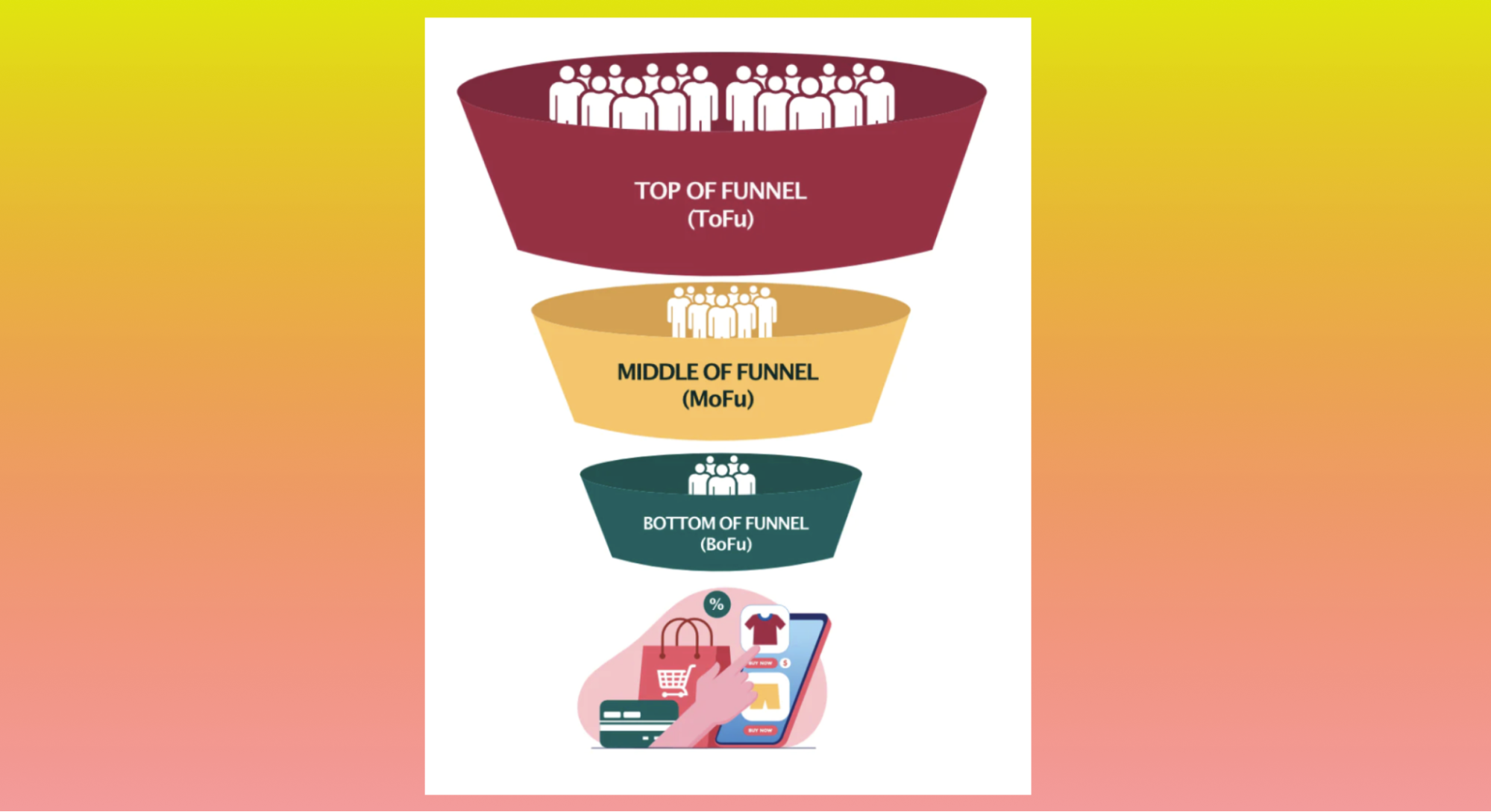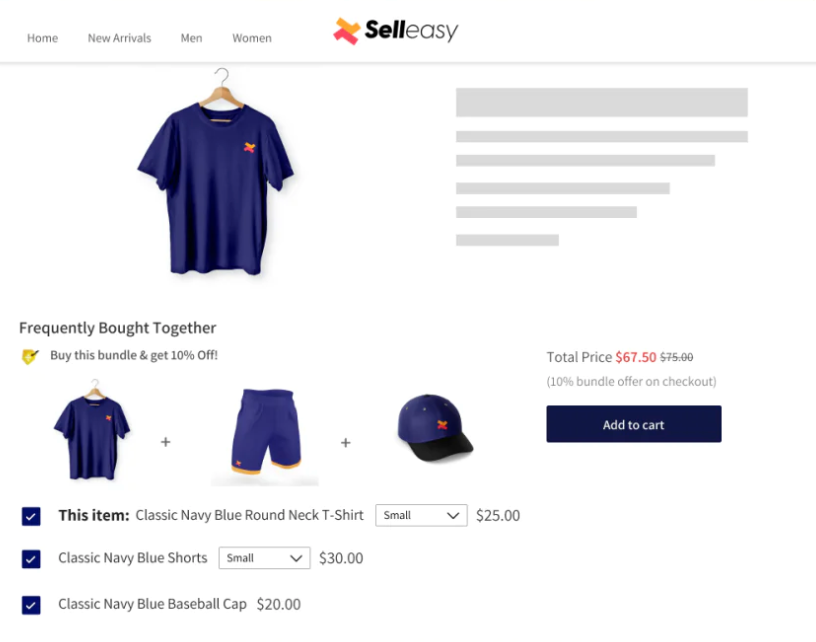The first purchase ever made online was a Sting album in 1994.
At the time, finding, picking, and purchasing a product without seeing it in person was unheard of. Fast forward 30 years, and just about every business interaction is, or can be, handled online.
That goes for the exchange of money from customer to a business, emailed receipts, and delivery of the final product.
Ecommerce is now a necessary part of the retail experience. In 2024, ecommerce sales are expected to pass $6 trillion globally. For anyone making a living selling goods online and trying to take a chunk out of those trillions, the competition can be stiff, but there are ways to stand out from the pack.
18 ecommerce tips for businesses
- Find your unique selling proposition
- Optimize your website’s user experience
- Create an FAQ page for your “why”
- Be thoughtful in your email marketing strategies
- Build an ecommerce funnel
- Experiment with social media platforms
- Organically grow ad spend
- Take notes on competitors
- Tap alternative marketing tools
- Schedule product drops
- Play with promotion
- Partner with a 3PL
- Make returns easy
- Add live chat
- Reward customer loyalty
- Upsell products
- Offer free shipping
- Build relationships with influencers
1. Find your unique selling proposition
Want to sell clothes, electronics, paint, books, or some kind of professional services? Gear up, because no matter what you’re selling, you’re going to have competition.
The best way to stand out from competitors is to think strategically about your niche. Is it geographical and based on the region where you live? How are you going to cater to or speak to your target market?
Once you figure out what defines your business and makes you different from everyone else, you can develop a business plan with clear milestones to execute your goals.
2. Optimize your website’s user experience

It takes an internet user less than half a second to generate an opinion on an organization from its website.
Even if you want your website to be more beautiful or have more functionality than your resources allow, put in the effort to make it clean, functional, and presentable.
It doesn’t have to be fancy, but it does need to be clear and easy for a user to navigate so they can make their purchase.
3. Create an FAQ page for your “why”

As you plan out or update your website, include a frequently asked questions (FAQ) page.
Depending on the product or service you’re selling or providing to a customer, this is where your “why”—as in, the reason you started your business in the first place—comes in.
For example, if you sell fair trade scarves made by women in rural communities across the globe, this can be a space where you explain why you do what you do and what the larger context is around your business.
An FAQ page can help automate the education behind the goods or services sold and save you time in the long run. Your FAQ page can answer basic customer inquiries so you don’t always have to.
4. Be thoughtful in your email marketing strategies
Send out a weekly newsletter with information on sales, new content, or product drops. Your email marketing strategy doesn’t have to be fancy—and you can find freelance writing support if you’re not great at the task.
Repeated emails to customers keeps you on their radar and may sway them to return for a purchase. Effective strategies include:
Building your email marketing list
Data can equal dollars, so create a landing pop-up offering customers a discount if they sign up for your email newsletter. If selling products or services in your local community, ask in-person customers to sign up for your newsletter for a discount.
Being authentic
If you want to have creative control over your email marketing, use your own voice (or your brand’s voice) with your customers. Your business should have a personality to it, and that personality starts with you.
Keeping an eye on open rates
As you start to send out email newsletters, pay attention to your open rates. Open rates show how many people on your mailing list are actually opening your marketing emails. You can easily compare open rates for different kinds of messages to get a sense of what people want to read—and what they don’t.
5. Build an ecommerce funnel

An ecommerce funnel represents the many stages of a customer’s journey on your website—how a customer goes from Point A to Point B, or comes into contact with your site to make a purchase. It is typically divided into three stages, top, middle and bottom. There are strategies applied at each stage to help customers build awareness and consideration, and then purchase from your brand.
In a typical funnel, a customer lands on your website, maybe as a result of social media or search engine optimization (SEO). They then sign up for your newsletter to get a discount. They visit the website, build a cart, then abandon their cart.
You have an automatic alert sent to them if they abandon their cart. Then they place an order, and you email them that an order has been received and shipped. Finally, you send them a survey about their experience.
This sales funnel guides a casual browser toward their final purchase through small nudges that you can automate on your website. A sales funnel has become the norm because it intertwines a solid user experience with consistent communication. Start your own by creating nudges for browsers and buyers alike, like abandoned cart notifications and final customer surveys.
6. Experiment with social media platforms

Some ecommerce businesses naturally take off on one social media platform over another. A business may have a lot of followers and engagement on Instagram and TikTok, but not much presence on Facebook.
Still, a comprehensive social media strategy should be active on three or four platforms. This can be challenging, especially if you’re an avid user of Instagram and the platform results in more sales. You need to be active on several platforms, because a competitor in your space may be researching their competition—like you.
If you leave one channel open, they could swoop in and dominate your market on the platform you’re ignoring. When your business lives across a handful of digital spaces, customers can find you easily, and you’re still top of mind compared to competitors.
7. Organically grow ad spend
Ad spend is the amount of money you spend on digital advertising each month.
The pro of ads is they can capture the eyeballs of many different customers you may not otherwise be able to reach. However, just because you invest in ads doesn’t mean you will always get a return on your investment.
Focus on increasing your ad spend organically by investing more cash over time. That way, you can track what’s working and what isn’t.
8. Take notes on competitors
Assessing the competitive landscape doesn’t stop after launch. To understand other ecommerce brands, block out time on your calendar to study their websites, social media channels, and sales funnels.
What are they doing that you appreciate from a user perspective? What strategies could you adopt for your own website? No one is barred from using similar—or the same—marketing strategies.
9. Tap alternative marketing tools
Did you know that one of the go-to tips for growing a YouTube following is to showcase expertise (in writing) through online forums like Quora and Reddit?
Branching out to share specialized knowledge on forums could help connect you to users who share your interests and passions—plus, they may become potential customers.
Influencer culture has shown us that once people develop trust in your expertise, they’re more likely to spend their dollars with you.
10. Schedule product drops
If new products tend to arrive midweek and you typically add them to your website on Saturdays, build drops into your social media calendar.
Write a blog post, create video content, promote on your social media platforms for 24 to 48 hours leading up to the drop or special release. From there, keep your drops on a schedule to build anticipation with customers.
You want your customers to keep returning to your account page each Saturday, for example, when they know new products are released. This can help increase your overall sales and build consistent revenue.
11. Play with promotion

No matter what type of promotion or discount you’re looking to run, create a sense of urgency around it.
Add a timer to the banner of your website to alert customers your sale is only happening for a limited time, or launch a sale where the first hundred customers receive a special perk along with their discount.
Be prepared for potential trial and error along the way. It’s important to piece together different combinations of discounts, social media platforms, and drops to see which times and dates customers bite.
12. Partner with a 3PL
Customers expect quick and accurate delivery. Small and medium ecommerce businesses often find it hard to meet these expectations while also focusing on growth.
Many partner with a third-party logistics (3PL) provider. These are external companies that take over your supply chain and logistics operations. They include warehousing, inventory management, order fulfillment, and more.
Say your artisanal soap and beauty brand is growing. You find it challenging to manage inventory, pack orders, and negotiate with shipping carriers while developing new products and marketing your business.
By partnering with a 3PL, you can hand off the physical handling of products to the experts. You benefit from automated order picking and packing, lower shipping rates, and the ability to scale without worrying about shipping logistics. Popular 3PLs include ShipBob and Red Stag Fulfillment.

13. Make returns easy

A straightforward, hassle-free ecommerce returns process is beneficial for any business. It builds trust with customers and can be a competitive advantage because many customers compare return policies before buying.
Include clear instructions on your website for returns. Make sure your returns policy is fair and easily understood. For example, you can offer a 30-day return window and eliminate fees for returns. Instead, customers can get instant store credit they can use to find another product.
To make returns easier, use the AfterShip Shopfiy App. With AfterShip, you can create a branded self-service returns portal that makes the process simple and keeps customers happy.
14. Add live chat

Live chat is a customer service tool that lets shoppers interact with customer support reps or chatbots in real time. It usually appears as a chat bubble on your website where customers can type their questions and get immediate responses.
Gymshark, for example, lets customers search for help, read the latest news, and even send messages to its support team.
By adding a live chat app like Shopify Inbox, you can create a more interactive and satisfying customer experience, which can lead to more sales.
15. Reward customer loyalty

There’s an old saying in business that it’s more cost-effective to retain an existing customer than to acquire a new one. That’s especially true in ecommerce, which is why you want to reward loyal customers who are more likely to continue doing business with you.
There are many different types of loyalty programs. You could run a points-based program, where customers accumulate reward points and redeem them for free products or discounts.
There are also tiered loyalty programs, where the more a customer spends, the more perks they get. For members of the GEM Bite Club, for example, the more GEM Bucks they earn through various activities, the more benefits they get from the loyalty program.
It’s a smart idea to create a loyalty program for your brand. That way, you can improve customer retention and create brand advocates that recommend your products to others.
To build a loyalty program, you’ll need a good app, and the Shopify App Store has plenty. Two top recommendations are Smile and BON — both have free plans available.
16. Upsell products

Upselling is an ecommerce sales technique where you encourage customers to purchase more expensive products, upgrades, or add-ons.
Say a customer views the product page for a book you’re selling, your site could suggest a deluxe edition or boxed set that includes the entire series. As the customer checks out with a book, your site might recommend adding a popular bookmark or a limited-edition cover.
Upselling is about balance and relevance—not being aggressive. To upsell without frustrating customers, use Selleasy. It’s a user-friendly app that is easy to install and lets you build customized upsells and offers that boost your average order value (AOV).
17. Offer free shipping
Free shipping should be an option if you can swing it. A recent survey found that 82% of shoppers said free shipping was the most important factor when choosing a business to buy from online.
You can offer free shipping all the time, or under specific conditions like reaching a minimum order value, obtaining membership in a loyalty program, or during promotional periods.
📚Read: How to Offer Free Shipping & Two-Day Delivery: Compete With Amazon While Increasing Profit Margins
18. Build relationships with influencers
Influencer marketing is a multibillion-dollar industry these days. Businesses both large and small use this tactic to reach new markets and build trust with target audiences.
Influencers, often on platforms like Instagram, YouTube, and TikTok, have the power to affect purchasing decisions due to their position. If you’re a small skin care business, for example, you can collaborate with an influencer who showcases your products in a TikTok video.
Since people trust the influencer’s opinion, it’s more likely they’ll purchase from your ecommerce brand. Look for influencers whose audience aligns with your business’s target market. Then, connect with them and ensure that the collaboration is mutually beneficial—the influencer gets content that is relevant to their audience, and the business gains exposure.
What to consider when investing in ecommerce
As you invest in your ecommerce sales strategies, keep your customer base in the forefront of your mind. What’s their age? Are they following trends? Are they more aligned with standalone hobbies, products, or industries?
For example, if you’re selling essential oil diffusers at a higher price point than the rest of the market, you may piece together that your target market is in their 30s to 40s, a parent, and practices yoga. All of these facts can point you toward alternate avenues to reach your target demographic.
Another consideration is long-term goals, which can be assessed by asking key questions:
- Are you trying to create a business that will keep growing in the years to come and branch out into other products or services?
- Or, are you looking to get acquired one day?
The answer may help determine whether it’s worth starting with a small marketing budget and building out slowly, or investing more heavily over time.
Ecommerce tips FAQs
What makes an ecommerce website successful?
Refining a funnel approach takes a customer from a casual browsing experience to an active purchase with a delivered product or service.
What are the types of ecommerce businesses?
Ecommerce businesses are in the market of selling goods and services online through models like:
How do I keep customers coming back to my ecommerce store?
Create a firm, established schedule around your product drops. When you run sales on your website, create a sense of urgency around them. Even when you’re tempted to branch out and find more and more new customers, keep an eye on ways to have your existing customers come back, through initiatives like a loyalty program.


